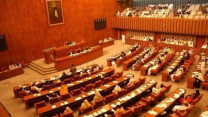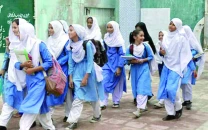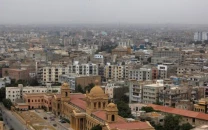Report paints dismal picture of health facilities
A new report paints a dismal picture of state-run health facilities in Pakistan.

Report paints dismal picture of health facilities
Zaheer Khattak, member of the Fafen Executive Council, told journalists at the Peshawar Press Club that one-fifth of Basic Health Units (BHUs) monitored across the country do not have female staff including two-thirds of BHUs in Balochistan. Khattak said that Fafen governance monitors visited 110 BHUs across the country during April 2010.
“Almost one-fourth of BHUs do not have staff to offer family planning counseling or other services, 40 per cent do not have maternity kits and half of them do not have labour rooms,” he said.
The report also points out striking geographic disparities across the country, especially between Punjab (with most staff and facilities to serve women) and Balochistan (with the least).
Most of the BHUs are employing more than the sanctioned number of paramedical staff (all male), but they have a shortage of nurses (who are predominantly female), it says.
The report documents a similar difference in appointment of male and female doctors. Two per cent sanctioned posts for male doctors are vacant as compared to 13 per cent of posts for female doctors.
According to the report, 88 per cent of BHUs are not housed in proper buildings. Region-wise, the analysis shows that more than 20 per cent of BHUs monitored in Khyber-Pakhtunkhwa are not housed in proper buildings, while in Punjab such BHUs are 14.6 per cent.
Similarly, one-third of all BHUs monitored either do not have toilets or have toilets without running water. The issue is more deplorable in Balochistan where almost two-thirds of monitored facilities do not have sanitation facilities for patients. According to the breakup, 57.1 percent BHUs in Khyber-Pakhtunkhwa, 30 per cent in Sindh and 26.8 per cent in Punjab face the same issue.
The report says that around half of BHUs do not have drinking water arrangements. The breakup shows that more than half (57.1 per cent) of BHUs in Khyber-Pakhtunkhwa, 50 per cent in Balochistan, 46.7 per cent in Sindh and 41.5 per cent in Punjab do not have drinking water facilities.
One-fifth of BHUs do not have proper waiting rooms for patients, with 43 per cent in Khyber-Pakhtunkhwa, 25 per cent in Balochistan, 50 per cent in Fata, 13.3 per cent in Sindh and 7.3 per cent in Punjab facing this problem.
Most of the BHUs visited by Fafen governance monitors lack essential equipment and services. And 16 per cent do not offer free-of-cost medicines to patients. The reports says that 22 per cent of BHUs do not have syringe cutters, raising the possibility of reuse of used syringes – a practice that compromises the government’s resolve to contain the spread of communicable diseases, such as hepatitis, HIV, etc.
More than half (56.9 per cent) of BHUs across the country do not have staff and specialised wards to treat patients of emergency nature. No BHU in Fata has such facilities. Around 79 per cent of BHUs in Khyber-Pakhtunkhwa, 75 per cent in Balochistan, 60 per cent in Sindh and 35 per cent in Punjab do not have special arrangements to address medical emergencies.
Published in the Express Tribune, May 29th, 2010.


















COMMENTS
Comments are moderated and generally will be posted if they are on-topic and not abusive.
For more information, please see our Comments FAQ